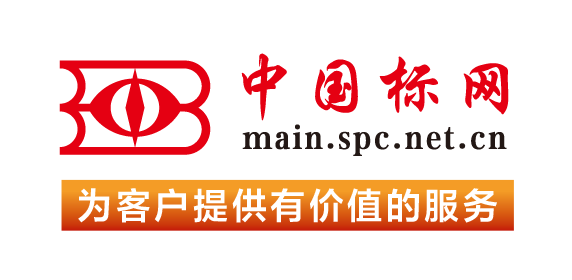【国外标准】 Standard Test Method for Photoelastic Determination of Residual Stress in a Transparent Glass Matrix Using a Polarizing Microscope and Optical Retardation Compensation Procedures
本网站 发布时间:
2024-02-28
开通会员免费在线看70000余条国内标准,赠送文本下载次数,单本最低仅合13.3元!还可享标准出版进度查询、定制跟踪推送、标准查新等超多特权!
查看详情>>
适用范围:
5.1 The quality and performance of an article of glassware may be affected not only by the presence of residual stresses due to heat treatment above the strain point in the ware, but also by additional residual stresses caused by differences in thermal expansion between the glass substrate, and either cord, fired-on vitreous enamel, or ACL decoration.5.2 The effects of those additional residual cord, enamel, or ACL stresses and the resulting performance of such items may be evaluated by performance test procedures. Such evaluations of enamel or ACL stresses may also be accomplished through the determination of appropriate physical properties of the decoration and matrix glass, or by analytical methods.5.3 This test method offers a direct and convenient means of determining the magnitudes and spatial distributions of residual stress systems in glass substrates. The test method is simple, convenient, and quantitatively accurate.5.4 This test method is useful in evaluating the degree of compatibility between the coefficient of thermal expansion of an enamel or ACL applied to a glass substrate.1.1 This test method covers the determination of residual stresses in a transparent glass matrix by means of a polarizing microscope using null or retardation compensation procedures.1.2 Such residual stress determinations are of importance in evaluating the nature and degree of residual stresses present in glass matrixes due to cord, or the degree of fit, or suitability of a particular combination of glass matrix and enamel, or applied color label (ACL).1.3 The retardation compensation method of optically determining and evaluating enamel or ACL residual stress systems offers distinct advantages over methods requiring physical property measurements or ware performance tests due to its simplicity, reproducibility, and precision.1.4 Limitations—This test method is based on the stress-optical retardation compensation principle, and is therefore applicable only to transparent glass substrates, and not to opaque glass systems.1.5 Due to the possibility of additional residual stresses produced by ion exchange between glasses of different compositions, some uncertainty may be introduced in the value of the stress optical coefficient in the point of interest due to a lack of accurate knowledge of chemical composition in the areas of interest.1.6 This test method is quantitatively applicable to and valid only for those applications where such significant ion exchange is not a factor, and stress optical coefficients are known or determinable.1.7 The extent of the ion exchange process, and hence the magnitudes of the residual stresses produced due to ion exchange will depend on the exchange process parameters. The residual stress determinations made on systems in which ion exchange has occurred should be interpreted with those dependencies in mind.1.8 The values stated in SI units are to be regarded as the standard. The values given in parentheses are for information only.1.9 This standard does not purport to address all of the safety concerns, if any, associated with its use. It is the responsibility of the user of this standard to establish appropriate safety, health, and environmental practices and determine the applicability of regulatory limitations prior to use.1.10 This international standard was developed in accordance with internationally recognized principles on standardization established in the Decision on Principles for the Development of International Standards, Guides and Recommendations issued by the World Trade Organization Technical Barriers to Trade (TBT) Committee.
标准号:
ASTM C978-04(2019)
标准名称:
Standard Test Method for Photoelastic Determination of Residual Stress in a Transparent Glass Matrix Using a Polarizing Microscope and Optical Retardation Compensation Procedures
英文名称:
Standard Test Method for Photoelastic Determination of Residual Stress in a Transparent Glass Matrix Using a Polarizing Microscope and Optical Retardation Compensation Procedures标准状态:
Active-
发布日期:
-
实施日期:
出版语种:
- 推荐标准
- ASTM C1472-16(2022) Standard Guide for Calculating Movement and Other Effects When Establishing Sealant Joint Width
- ASTM C1473-19 Standard Test Method for Radiochemical Determination of Uranium Isotopes in Urine by Alpha Spectrometry
- ASTM C1477-19 Standard Test Method for Isotopic Abundance Analysis of Uranium Hexafluoride and Uranyl Nitrate Solutions by Multi-Collector, Inductively Coupled Plasma-Mass Spectrometry
- ASTM C1479/C1479M-22 Standard Practice for Installation of Precast Concrete Sewer, Storm Drain, and Culvert Pipe Using Standard Installations
- ASTM C1483/C1483M-17(2022) Standard Specification for Exterior Solar Radiation Control Coatings on Buildings
- ASTM C1485-19 Standard Test Method for Critical Radiant Flux of Exposed Attic Floor Insulation Using an Electric Radiant Heat Energy Source
- ASTM C1486-18(2023) Standard Practice for Testing Chemical-Resistant Broadcast and Slurry-Broadcast Resin Monolithic Floor Surfacings
- ASTM C1487-19 Standard Guide for Remedying Structural Silicone Glazing
- ASTM C1489-15(2022) Standard Specification for Lime Putty for Structural Purposes
- ASTM C1498-04a(2023) Standard Test Method for Hygroscopic Sorption Isotherms of Building Materials
- ASTM C1499-19 Standard Test Method for Monotonic Equibiaxial Flexural Strength of Advanced Ceramics at Ambient Temperature
- ASTM C150/C150M-22 Standard Specification for Portland Cement
- ASTM C1504-20 Standard Specification for Manufacture of Precast Reinforced Concrete Three-Sided Structures for Culverts and Storm Drains
- ASTM C1507-20 Standard Test Method for Radiochemical Determination of Strontium-90 in Soil
- ASTM C1508-18 Standard Test Method for Determination of Bromine and Chlorine in UF6 and Uranyl Nitrate by X-Ray Fluorescence (XRF) Spectroscopy
 购物车
购物车 400-168-0010
400-168-0010













